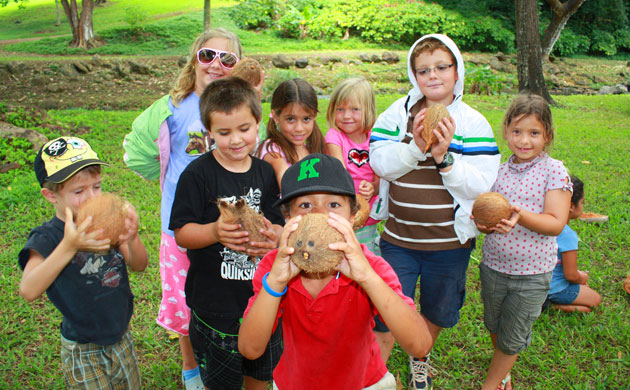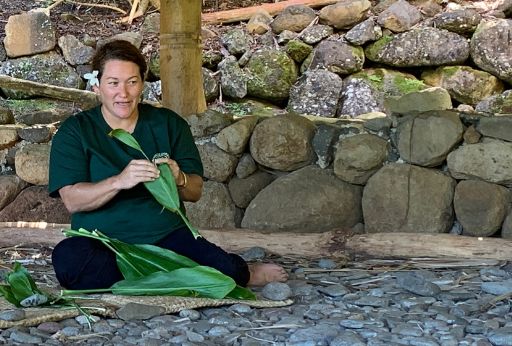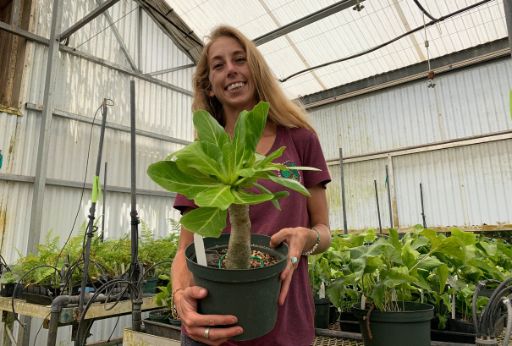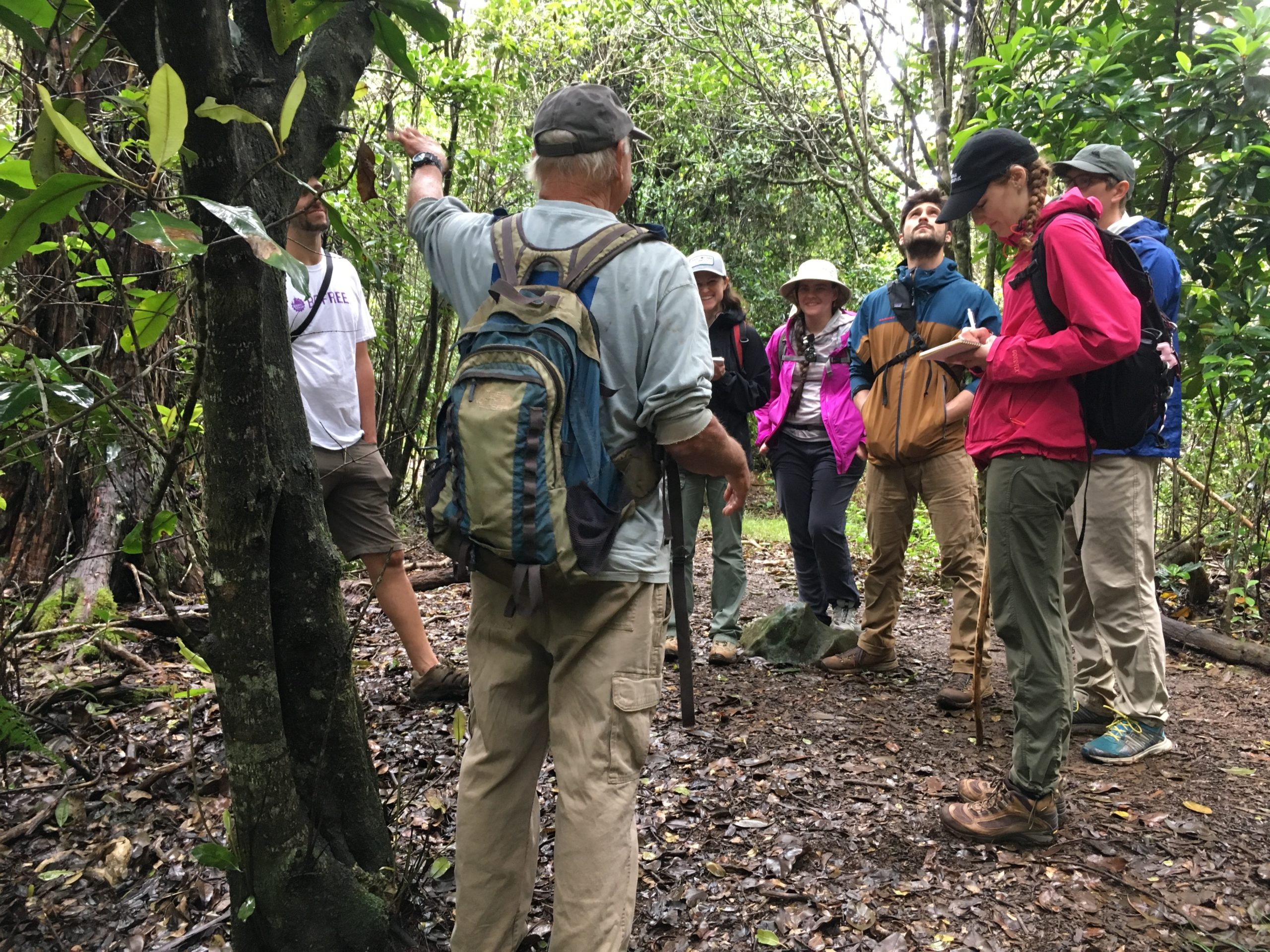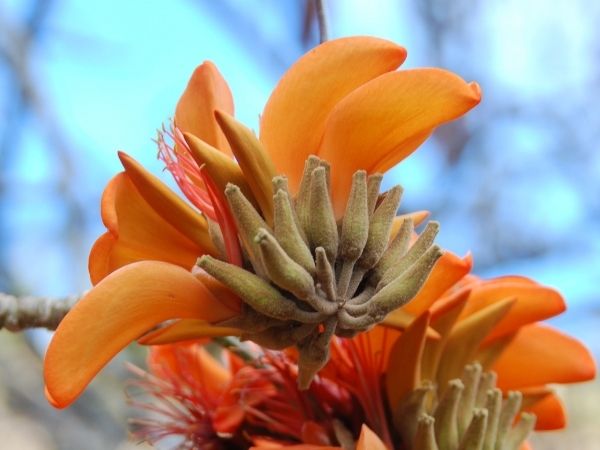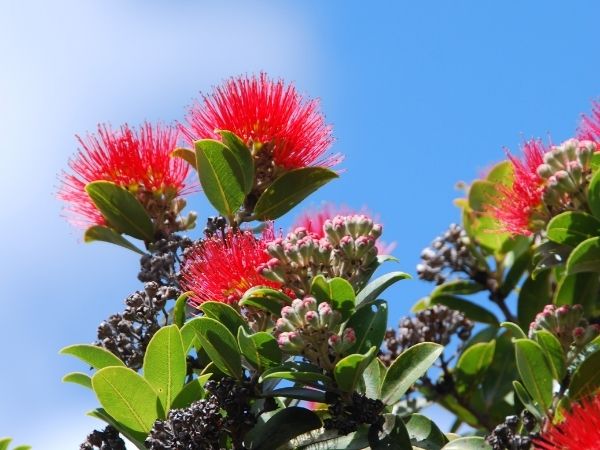Tropical Plant Database - Plant Details
Ruizia cordata
Click on any heading above to view more information about this plant
Conservation Status
- IUCN: Not Evaluated
- USFWS: None
David Lorence, PhD, NTBG Director of Science, talking about Ruizia cordata
Family: MALVACEAE
Genus: Ruizia
Species: cordata
Species Author: Cav.
Synonyms: R. lobata, R. palmata, R. laciniata, R. variabilis
Genus: Ruizia
Species: cordata
Species Author: Cav.
Synonyms: R. lobata, R. palmata, R. laciniata, R. variabilis
Ruizia is a small dioeceous tree growing to a maximum height of 10 meters (33 feet) which is endemic to Reunion island, as it grows wild only there.
The blackish bark is very cracked, which is another of its decorative features. The foliage is heterophyllous, the juvenile leaves are much dissected, whereas the adult leaves are less so. The species is said to be dioecious, meaning male and female flowers are borne on separate plants. The flowers are borne in clusters in leaf axils. They are involucellate, with an deciduous tripartite epicalyx. The calyx is five-lobed, and persistent. The corolla consists of 5 salmon-pink petals. There are 30-40 stamens joined at their bases to form an urn-shape. There are 10, short, styles and 10 carpels, each with two ovules. The fruit is a small globular capsule. The seeds are weakly three-angled, and unwinged.
The blackish bark is very cracked, which is another of its decorative features. The foliage is heterophyllous, the juvenile leaves are much dissected, whereas the adult leaves are less so. The species is said to be dioecious, meaning male and female flowers are borne on separate plants. The flowers are borne in clusters in leaf axils. They are involucellate, with an deciduous tripartite epicalyx. The calyx is five-lobed, and persistent. The corolla consists of 5 salmon-pink petals. There are 30-40 stamens joined at their bases to form an urn-shape. There are 10, short, styles and 10 carpels, each with two ovules. The fruit is a small globular capsule. The seeds are weakly three-angled, and unwinged.
Ruizia is a monotypic, endangered, genus, from Reunion. This plant is a xerophilous one, which means it naturally grows is dry areas, at low elevation.
A few years ago, this species was still endangered, because of environmental pressures and the retrieving of bark for supposed curative use by local herb-doctors. This species is now protected by law and is more often found in people's home gardens. It is also slowly being reintroduced into the wild by the Conservatoire Botanique des Mascarins on Reunion. A number of trees are in cultivation at the McBryde Garden of the National Tropical Botanical Garden on Kauai, Hawaii where they flower and fruit regularly.
- 021021 - collected by David H. Lorence in 1995
- S047624 - collected by J. Y. Lesouef in 1996
- 044242 - collected by Tim Flynn in 2005
- 080421 - collected by Ruth Albert-Lyons in 2019
We currently have 4 herbarium specimens for Ruizia cordata in our collection. Click on any specimen below to view the herbarium sheet data.
.svg)




